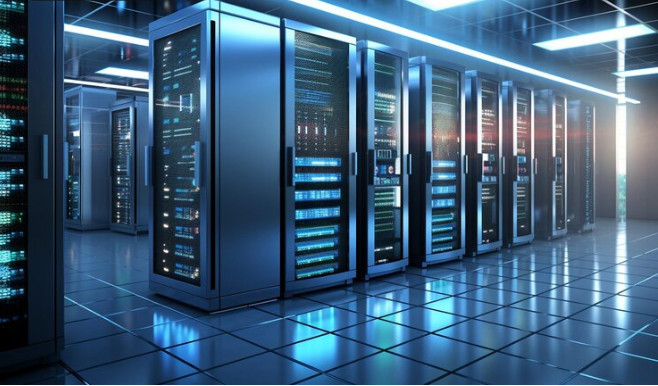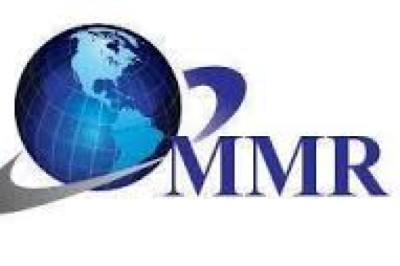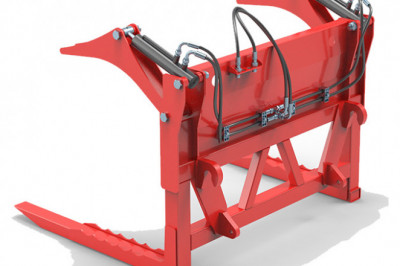views

In today's data-driven world, managing and storing vast amounts of information efficiently is crucial. Network Attached Storage (NAS) devices have emerged as a popular choice for individuals and businesses alike, offering scalable and secure storage solutions. But what is NAS, and how can you set it up to meet your needs? This comprehensive guide will walk you through the concept of NAS, its benefits, and practical steps to implement it.
Understanding Network Attached Storage NAS
Network Attached Storage (NAS) is a file-level storage architecture that makes stored data more accessible to networked devices. Unlike traditional hard drives, NAS devices connect directly to a network, allowing multiple users to access and share data simultaneously. This capability makes NAS an ideal storage solution for both home and enterprise environments.
NAS devices come in various configurations, from single-drive units to complex multi-bay systems. They usually feature their own operating systems, enabling functionalities like file sharing, media streaming, and data backup. As a result, NAS offers a versatile and reliable method for managing your data.
Why Choose NAS Over Traditional Storage?
One of the primary reasons people opt for NAS is its ease of access. Since NAS devices are network-connected, users can access their files from any device on the same network. This accessibility makes NAS a convenient option for remote workers, families, and businesses requiring centralized data storage.
Another advantage of NAS is its scalability. Unlike traditional storage solutions, which can be cumbersome to expand, NAS systems allow for easy scalability. You can start with a smaller setup and add more storage capacity as your needs grow. This flexibility makes NAS a future-proof investment.
Finally, NAS provides robust data protection features. Most NAS devices come with built-in redundancy options like RAID (Redundant Array of Independent Disks), ensuring that your data remains safe even if one of the drives fails. Additionally, many NAS systems offer automated backup solutions, further safeguarding your valuable information.
Key Components of a NAS System
Before setting up a NAS system, it's essential to understand its key components. A typical NAS setup includes the following elements:
- NAS Enclosure: The physical casing that houses the storage drives.
- Storage Drives: The actual hardware where data is stored, such as HDDs or SSDs.
- Network Interface: The component that connects the NAS device to your network, usually via Ethernet.
- Operating System: The software that manages the storage, access, and additional functionalities of the NAS device.
Each of these components plays a crucial role in the overall performance and reliability of your NAS system. Selecting high-quality components will ensure that your NAS setup meets your storage needs effectively.
Choosing the Right NAS for Your Needs
Selecting the right NAS device depends on various factors, including storage capacity, performance, and budget. For home users, a simple two-bay NAS may suffice. These devices offer enough storage for personal files, media, and backups without breaking the bank.
For businesses, a more robust solution may be necessary. Enterprise-grade NAS systems come with advanced features like higher storage capacities, faster data transfer speeds, and enhanced security options. These devices are designed to handle heavy workloads and provide reliable performance under demanding conditions.
When choosing a NAS device, consider future scalability. Opt for a system that allows you to add more storage drives as your requirements grow. Additionally, check for compatibility with various operating systems and devices to ensure seamless integration into your existing setup.
Setting Up Your NAS Device
Setting up a NAS device may seem daunting, but it can be a straightforward process with the right guidance. Follow these steps to get your NAS system up and running:
- Unbox and Assemble: Start by unboxing your NAS device and installing the storage drives into the enclosure. Ensure that the drives are securely fastened and properly connected.
- Connect to Network: Use an Ethernet cable to connect your NAS device to your router or switch. This connection will enable network access to the NAS device.
- Power Up: Plug the NAS device into a power source and turn it on. Wait for the device to initialize, which may take a few minutes.
Once the physical setup is complete, you'll need to configure the NAS device using its web-based interface. This configuration process typically involves steps like setting up user accounts, creating shared folders, and configuring network settings.
Configuring User Access and Permissions
One of the key advantages of NAS is its ability to manage multiple users. Configuring user access and permissions ensures that only authorized individuals can access specific data. Most NAS devices offer a user-friendly interface for managing user accounts and permissions.
Start by creating user accounts for each individual who needs access to the NAS device. Assign appropriate permissions based on their roles and requirements. For example, you can grant read-write access to certain folders while restricting others to read-only.
Additionally, consider setting up user groups to simplify permission management. For instance, you can create a group for family members with access to personal files and another group for employees with access to business data. This approach streamlines the process of assigning and managing permissions.
Setting Up RAID for Data Redundancy
RAID (Redundant Array of Independent Disks) is a critical feature for ensuring data redundancy and protection in a NAS system. RAID configurations distribute data across multiple drives, allowing the system to remain operational even if one drive fails.
Common RAID levels include:
- RAID 1: Mirrors data across two drives, providing redundancy but reducing total storage capacity.
- RAID 5: Distributes data and parity information across three or more drives, offering a balance between redundancy and storage capacity.
- RAID 6: Similar to RAID 5 but with additional parity information, allowing for the failure of up to two drives.
Choose the RAID level that best suits your needs based on factors like data protection, storage capacity, and performance. Most NAS devices offer a simple setup process for configuring RAID, making it easy to implement.
Leveraging NAS for Data Backup
Data backup is a crucial aspect of data management, and NAS devices excel in this area. By setting up automated backup routines, you can ensure that your data remains safe and recoverable in case of accidental deletion, hardware failure, or other unforeseen events.
To set up automated backups, configure your NAS device to regularly copy data from your computers and other devices to the affordable NAS storage. Many NAS systems support various backup methods, including incremental backups, which only copy new or changed files, saving time and storage space.
Additionally, consider using cloud backup services in conjunction with your NAS device for an extra layer of protection. This approach ensures that your data remains safe even if your NAS system is compromised.
Enhancing Performance with Cache Drives
Cache drives can significantly enhance the performance of your NAS system, especially when dealing with large files or multiple simultaneous users. By storing frequently accessed data on high-speed cache drives, your NAS device can retrieve this information more quickly, improving overall performance.
Most NAS devices support the addition of cache drives, typically in the form of SSDs. When setting up cache drives, follow the manufacturer's guidelines to ensure proper installation and configuration. This enhancement can make a noticeable difference in the responsiveness of your NAS system.
Monitoring and Maintaining Your NAS Device
Regular monitoring and maintenance are essential for keeping your NAS system running smoothly. Most NAS devices come with built-in monitoring tools that provide real-time information about system performance, drive health, and network activity.
Set up alerts to notify you of any issues, such as drive failures or network connectivity problems. Additionally, schedule regular maintenance tasks like firmware updates and system scans to ensure that your NAS device remains secure and up to date.
By staying proactive with monitoring and maintenance, you can prevent potential issues and ensure the longevity of your NAS system.
Expanding Storage Capacity
One of the significant advantages of NAS is its scalability. As your storage needs grow, you can easily expand your NAS system by adding more drives or upgrading existing ones. Most NAS devices support hot-swapping, allowing you to add or replace drives without shutting down the system.
When expanding storage capacity, consider using drives with larger capacities or faster speeds to maximize performance. Additionally, ensure that your NAS device supports the new drives you plan to add. This flexibility allows your NAS system to grow alongside your data requirements.
Leveraging NAS for Media Streaming
NAS devices are not just for data storage; they can also serve as powerful media servers for streaming music, movies, and photos to various devices. By setting up media server applications on your NAS device, you can enjoy your media collection on smart TVs, smartphones, and other networked devices.
Most NAS systems support popular media server applications like Plex and DLNA. These applications organize your media files and make them accessible to compatible devices on your network. This setup transforms your NAS device into a central hub for all your media needs.
Integrating NAS with Cloud Services
Integrating your NAS device with cloud services combines the benefits of local storage and cloud storage. This approach provides an extra layer of data protection and ensures that your files are accessible from anywhere with an internet connection.
Many NAS systems offer built-in support for popular cloud services like Google Drive, Dropbox, and OneDrive. By configuring your NAS device to sync with these services, you can create a hybrid storage solution that leverages the strengths of both local and cloud storage.
Additionally, cloud integration enables seamless data sharing and collaboration, making it easier to work with team members or family members regardless of their location.
Conclusion: The Future of Data Storage with NAS
Incorporating Network Attached Storage (NAS) into your data management strategy offers numerous benefits, from enhanced accessibility and scalability to robust data protection. By following the steps outlined in this guide, you can set up and configure a NAS system that meets your storage needs and future-proofs your data infrastructure.
Whether you're a home user looking to centralize your media collection or a business seeking reliable storage solutions, NAS provides a versatile and efficient option. Start exploring the possibilities of NAS today and take the first step towards a more organized and secure data future.











